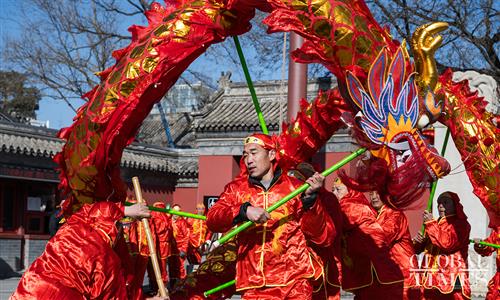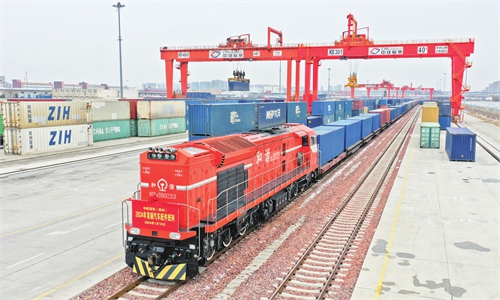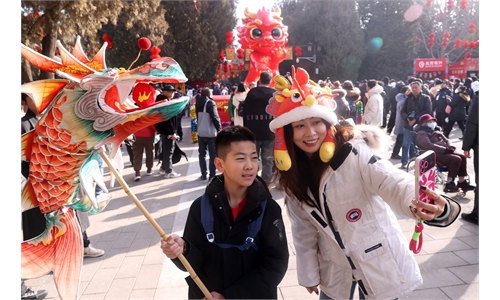Hometown witness: Tourists across nation enjoy authentic Chinese flavor in Confucius’ birthplace
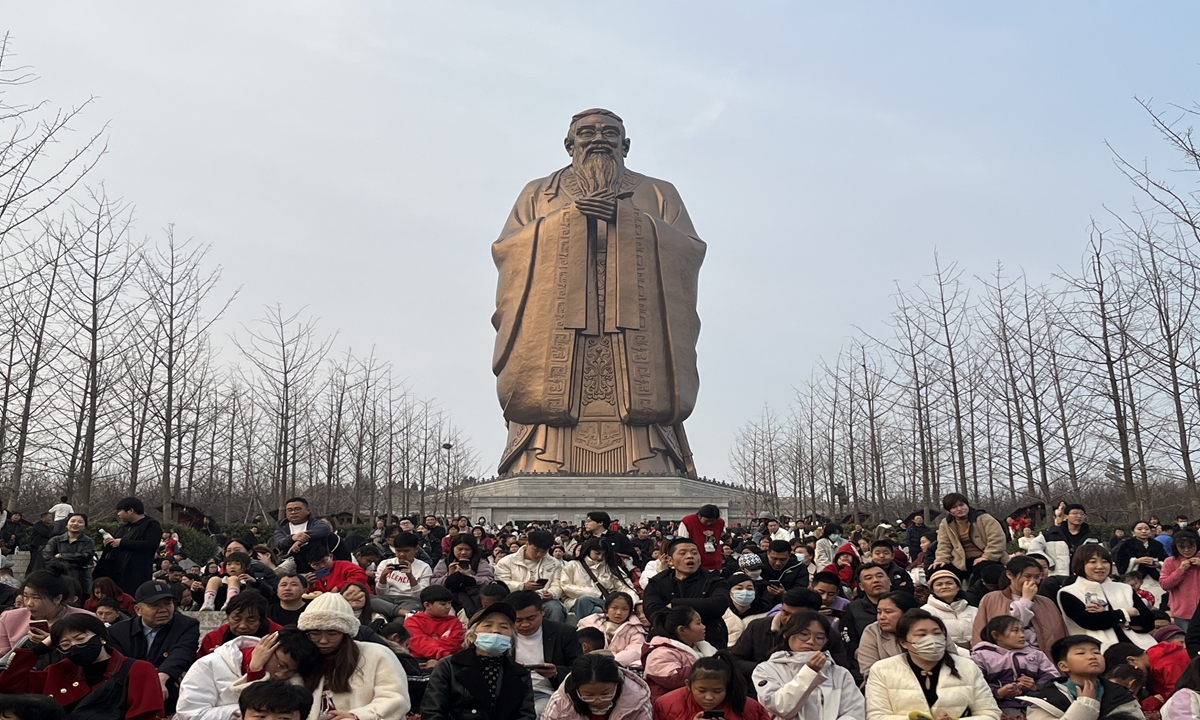
People pack around the sculpture of Confucius at Nishan, birthplace of the prominent ancient Chinese philosopher, in Qufu in East China's Shandong Province on February 14, 2024. Photo: Xu Keyue/GT
"The Master said: 'How happy we are to have friends from afar…'" at the Confucius Temple, students in traditional Chinese costume, or Hanfu, recited the Analects of Confucius in unison, creating a grand and majestic scene that showcases the enduring power of inheritance…with music, songs, and dances, the ancient traditions are passed down, which deeply impressed tourists who came to visit Qufu, East China's Shandong Province - the birthplace of prominent ancient philosopher Confucius, during this year's Spring Festival holidays (February 10-17).Private cars with license plates from Beijing and Tianjin, Jilin and Jiangsu provinces, as well as other regions could be seen everywhere on the road when the Global Times reporter arrived at the scenic area in Qufu on February 13 and 14, the fourth and fifth day of the Chinese New Year.
The reporter found from the major online traveling platforms that during the Spring Festival, hotel prices in Qufu surged and most hotel rooms were "sold out." The owner of a hotel at the scenic spot told the Global Times that "In previous years, there were not as many tourists, but this year here is super crowded."
All kinds of popular folk activities kicked off the authentic Chinese New Year.
During the Spring Festival holidays this year, the tourist area of Temple and Cemetery of Confucius and the Kong Family Mansion in Qufu, a UNESCO World Heritage Site, launched a series of activities such as night tour of the ancient area, a light show on the palace wall, and night parade of Chinese dragon dances.
At night, the reporter came to the wall of the ancient city of the Ming Dynasty (1368-1644) around the Confucius tourism area, where a large number of tourists gathered early, waiting for the opening of the light show. As the lights came on, a huge animation was projected onto the ancient city wall, and the stunning sound caused cheers from the audience, with many tourists holding up their mobile phones to record the unforgettable scenes.
Also, at day time, 100 calligraphy masters gathered at the Kong Family Mansion to splash ink and write the Spring Festival Couplets (Chunlian). Whenever the Chinese New Year was celebrated, Kong Family, like every family, would post Chunlian and door gods to express the best wishes for the Chinese New Year.
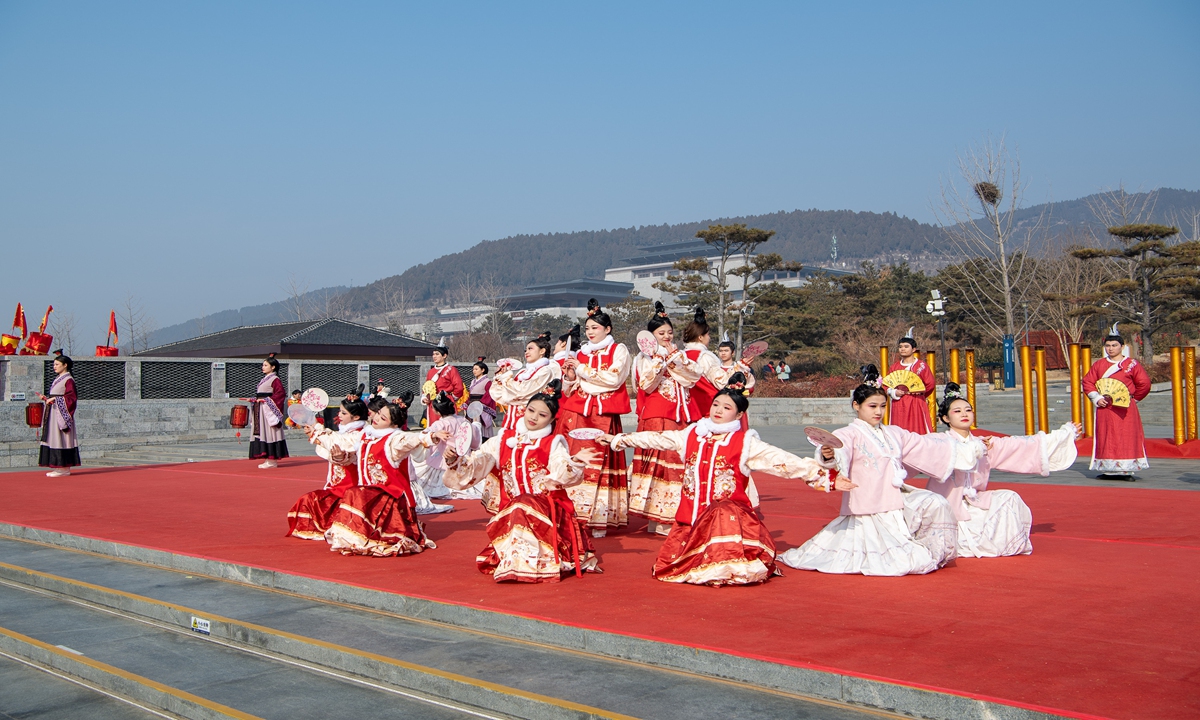
People wearing traditional Chinese costume, or Hanfu, perform in Nishan Sacredland scenic spot in Qufu, East China's Shandong Province on February 10, 2024, the first day of the Chinese New Year. Photo: VCG
The reporter learnt from the staff member of the tourist site that people wearing Hanfu, reciting the Analects of Confucius or guessing lantern riddles had the opportunity to get free tickets to the site.Many students, dressed in Hanfu, came to the Confucius birthplace to pay their respects to this eternal role model and make a wish toward the sculpture of Confucius that their academic performance could be better in the new year. For them, it is a cultural base where they can learn about Chinese culture and experience Confucianism in depth.
In Qufu, everyone who came here for the traditional festival can enjoy excellent traditional culture and intangible cultural heritage which are still the basic needs of the Spring Festival tourism market.
In particular, Hanfu, during this year's Spring Festival holidays, can be seen almost everywhere. One of the iconic Hanfu - the horse-face skirt or Mamianqun - with both classical and modern simple beauty, led to a surge in traditional culture spending and interest.
Caoxian county in Shandong Province is one of the production and sales bases of Hanfu in China, with sales of Hanfu exceeding 7 billion yuan ($972 million) a year. This year, sales of the Year of the Dragon clothing in Caoxian county, mainly Mamianqun, have exceeded 300 million yuan, according to the People's Daily on Sunday.
According to the big data of multiple e-commerce platforms, since January this year, the search volume of Hanfu has skyrocketed, among which, the Mamianqun has become the hottest single product under the Hanfu category, and the sales of many hot single products have exceeded one million yuan.
Apart from Qufu, in the historical and cultural districts of Xi'an, Luoyang, Hangzhou, Bengbu and other cities across China, tourists wearing Hanfu, take photos in the traditional carved and painted buildings, experience traditional folk customs and intangible cultural heritage, and taste the representative Chinese New Year dishes.
Centered on the theme of a "Happy Chinese New Year," the governments at all levels and the industries have worked together to create traditional festive vibes. Guangxi, Hunan, Jiangsu and other provinces and regions set off fireworks at fixed points, which has attracted many tourists and residents to enjoy the authentic Chinese New Year flavor.
Traditional and folk activities held during the Spring Festival are linked to the course of 5,000 years of civilization. No matter how far we advance in the process of Chinese-style modernization, we can remember China's beautiful nostalgia.

